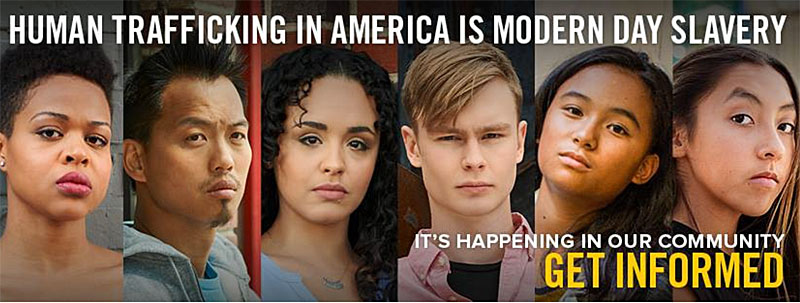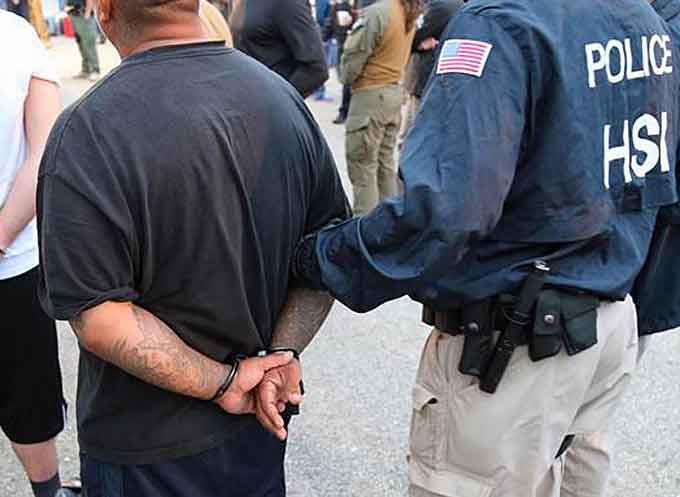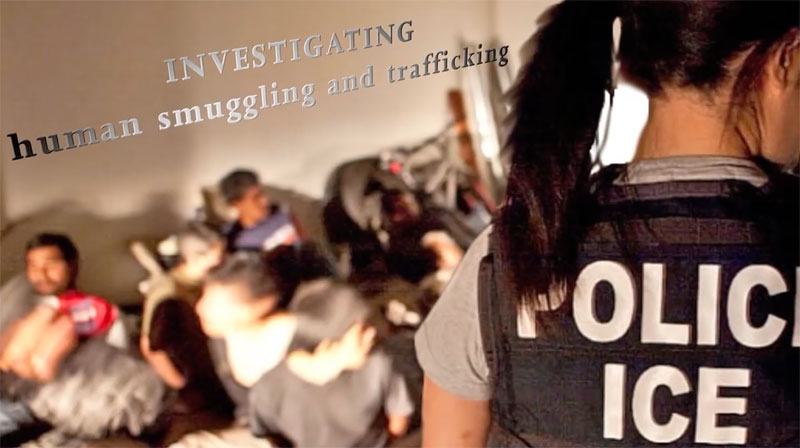
Human smuggling is big business.
The financial cost can be as high as a few thousand dollars to cross the border from Mexico to the United States, while immigrants from China might pay tens of thousands for their cross-Pacific journey.
However, no amount of money guarantees successful entry into the United States, or even survival.
According to U.S. Customs and Border Protection’s statistics, hundreds die attempting to get into the United States every year.
Due to the secretive nature of the lucrative, yet illegal underground market of human smuggling, accurately gauging the number of people who are smuggled into the United States is extremely difficult.
Some estimates put illegal crossings at 350,000 per year—and that’s just coming over the U.S.-Mexican border.
(The Blue Campaign infographic resources will help you to answer the question, “What is Human Trafficking?” Please help us bring this crime out of the shadows by sharing these materials on social media. Courtesy of DHS and YouTube.)
Looking for Solutions
With a crisis of this magnitude, special agents are always looking for a technological edge—and they may have found one in a data analytics software program called Igloo.
Igloo was developed by the Department of Homeland Security (DHS) Science and Technology Directorate (S&T), and is currently in use by select units of U.S. Immigration and Customs Enforcement (ICE) Homeland Security Investigations (HSI), the lead agency for investigating human smuggling.
Transnational Criminal Organizations (TCOs), which often perpetrate this illegal activity, reap massive profits from their crimes, including human trafficking and smuggling, drug smuggling, and illegal financial transactions.
They represent a significant threat to life, property, and the rule of law—a threat that HSI works to dismantle.
To do that, it relies on intelligence.
However, law enforcement is only as good as the intelligence they can act upon—and it is only as good as the timely and accurate analysis of data.
With the abundance of information available in today’s world, agencies are faced with a deluge of data that they need help analyzing.
S&T’s Borders and Maritime Director Jon McEntee explained that HSI desired greater automation of their investigative processes for rapid identification of targets and networks.
And that’s what Igloo does.
Crunching data quickly
Until recently, when on the trail of human smugglers, HSI special agents would be tasked with the slow and arduous chore of sifting through large amounts of data—often by hand.
As one can imagine, manually comparing and correlating multiple sources of data and looking for connections can take a lot of time. And time is a critical commodity.

With the launch of Igloo, law enforcement now has an advanced set of tools at their fingertips, explained McEntee.
Igloo leverages machine learning algorithms to search databases looking for patterns and anomalies.
Agents can use Igloo to scour multiple sources and then track, triangulate, and swiftly translate the telltale signs of this type of criminal activity into actionable intelligence.
To further support efficient use of agents’ valuable time, the software is built to have a user-friendly graphical interface.
McEntee explained that the Igloo software can quickly cross-reference and cross-correlate data from multiple sources. It finds commonalities and then builds a framework for law enforcement to use.
The current version of Igloo is deployed as a “beta” model. This early version of the technology is deployed for testing purposes to inform future versions. The preliminary results are quite promising.
In the future, S&T plans to transition Igloo to other offices within ICE. McEntee noted that other law enforcement who have similar needs and obstacles could also benefit from the tool.
The benefits of Igloo
This new technology and its potential in the future can directly help agents in the field because sometimes, chasing TCOs can be like chasing ghosts.
One minute they might have a lead, but by the time they put all the pieces together, the criminals might be gone.
Igloo puts good intelligence into the hands of agents so they can act on it. Its cutting-edge capabilities are allowing investigators to not only find new targets, but also deepen their understanding of how TCO networks operate and communicate.
Additionally, Igloo is a wholly owned government project, so there are no licensing fees associated with its use or its distribution to agencies.
With the deployment of Igloo, a greater ability to combat the TCOs is now in the hands of those who need it the most.
Learn More… The Blue Campaign
(Human trafficking and human smuggling represent significant risks to homeland security. Would-be terrorists and criminals can often access the same routes and utilize the same methods being used by human smugglers. U.S. Immigration and Customs Enforcements Human Smuggling and Trafficking Unit works to identify criminals and organizations involved in these illicit activities. Courtesy of ICE .gov and YouTube.)
Indicators of Human Trafficking
Recognizing key indicators of human trafficking is the first step in identifying victims and can help save a life.
Here are some common indicators to help recognize human trafficking:

- Does the person appear disconnected from family, friends, community organizations, or houses of worship?
- Has a child stopped attending school?
- Has the person had a sudden or dramatic change in behavior?
- Is a juvenile engaged in commercial sex acts?
- Is the person disoriented or confused, or showing signs of mental or physical abuse?
- Does the person have bruises in various stages of healing?
- Is the person fearful, timid, or submissive?
- Does the person show signs of having been denied food, water, sleep, or medical care?
- Is the person often in the company of someone to whom he or she defers? Or someone who seems to be in control of the situation, e.g., where they go or who they talk to?
- Does the person appear to be coached on what to say?
- Is the person living in unsuitable conditions?
- Does the person lack personal possessions and appear not to have a stable living situation?
- Does the person have freedom of movement? Can the person freely leave where they live? Are there unreasonable security measures?
Not all indicators listed above are present in every human trafficking situation, and the presence or absence of any of the indicators is not necessarily proof of human trafficking.

Partnerships
The Department of Homeland Security cannot combat human trafficking alone.
The President’s Interagency Task Force to Monitor and Combat Trafficking in Persons (PITF) brings together federal departments and agencies to ensure a whole-of-government approach that addresses all aspects of human trafficking.
The fight requires the contributions of all, including:
- Workers on the front lines – first responders, social workers, community volunteers, healthcare providers, teachers, and law enforcement;
- A range of organizations – private, public, and non-profit – who are committed to social responsibility and willing to speak out about this terrible scourge;
- Faith-based networks and houses of worship;
- Government entities that create and foster strong relationships to bring communities together and facilitate collaboration and the sharing of best practices; and
- Members of the public who, through the knowledge of their communities, can be the greatest asset in this fight.




















